June 24, 2025 | 12:47 GMT +7
June 24, 2025 | 12:47 GMT +7
Hotline: 0913.378.918
June 24, 2025 | 12:47 GMT +7
Hotline: 0913.378.918
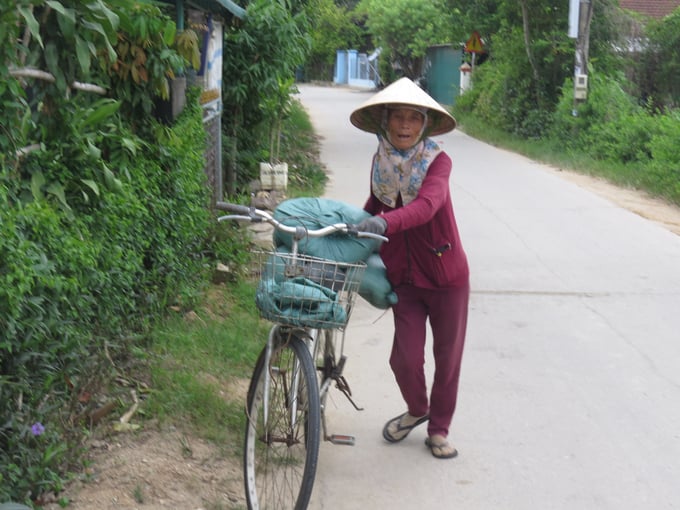
Nowadays, transportation is very convenient, but Sa Huynh salt workers still find it very difficult to sell salt on the road. Photo: Vo Thanh Ky.
Cultural and archeological researchers believe that in the map of Sa Huynh Cultural relics in Central Vietnam, important locations are all associated with river mouths and salt fields. This is true in Quang Ngai, the place where the ancient Sa Huynh people lived. These include Sa Huynh relics - Sa Huynh estuary - Sa Huynh salt fields; Binh Chau relics - Sa Ky estuary - Diem Dien salt fields (lost); Go Que relics - Sa Can estuary - Tuyet Diem salt fields (lost).
For the ancient Sa Huynh people, salt was a means of social interaction and a driving force for exchanges between the two regions. With the main items of trade being salt and forest products, the continuation of the tradition of trade between the Sa Huynh people and the Cham people and the Dai Viet people was maintained.
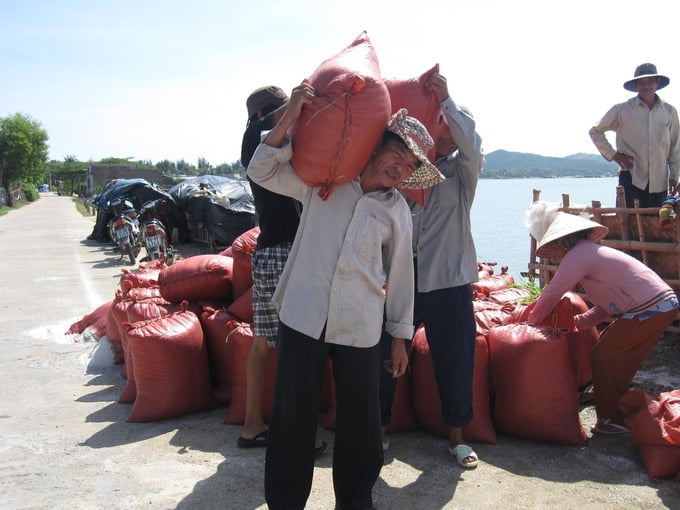
Salt transportation routes from Sa Huynh to the remote western mountainous regions still exist today. Photo: Vo Thanh Ky.
Present traders still transport salt to sell on the ancient road: Cung market - Ba Kham - Ba Trang - Vi O Lac Pass. And, residents at the foot of Vi O Lac Pass buy salt and transport it to the Mo Nam people's area in the remote highlands. "In the highlands of Ba Kham, Ba Trang (Ba To district, Quang Ngai), people only use salt to season their food, so the consumption is low. Every year we go there to sell a few times,” said Nguyen Thi Kim Nhung, a trader in Pho Thanh ward.
In the past, there were no means of transportation, so the consumption of salt was met with ample difficulties. Sa Huynh people walked hundreds of kilometers day and night with heavy loads of salt to faraway places to sell or exchange for agricultural and forestry products in many regions upstream and downstream.
A few people formed groups to travel together. They often set out at night to reduce the fatigue caused by the blazing sun pouring down on the roads during the day. Leaving the village, they walked along the coast in the dark. Then they turned into the village, heading towards the western mountains of Quang Ngai, where the ethnic minorities Hre, Ca Dong, and Cor had long lived.

Sa Huynh salt workers load salt onto trucks, then unload it at the sale points and sell it to retail villages. Photo: Vo Thanh Ky.
In those days, the mountains and forests were dark and ferocious beasts would go down to the fields and even into villages to look for food. People often went around the hills or dense forests, although it took a lot of time and effort. When they could not go around, they would wait for traders of other goods to arrive and then together they would cross the dangerous area. Sometimes a fierce tiger would rush out and carry a member of the group into the forest. Everyone would immediately throw down their baskets, scream loudly, and carry their shoulder poles to chase after their companion.
At the age of 14, Bui Thi Van followed her mother and villagers to carry salt to sell in many places. At midnight, the mother and daughter duo quietly left home, surrounded by darkness. At the intersection at the beginning of the village, a few people were waiting. They started walking together. The group headed west, through the silent villages in the dark night. After passing Cung market (Pho Cuong commune, Duc Pho town, Quang Ngai), they turned south when the roosters started crowing.
They crossed the railway tracks as dawn broke in the distance. There were figures looming ahead, making everyone uneasy. But then they recognized each other. The salt seller and buyer had met many times. Together they walked to the tall bushes that hid their heads. The two sides negotiated a price. The seller used a can to measure salt into the buyer's basket, then hurriedly parted ways before the other could see his face.
Nguyen Thi Ga, 14 years old at that time, carried salt with her mother to faraway villages. The bombs and bullets of war were no longer fierce, but fear still haunted her and the gentle villagers. Her thin shoulders ached from the heavy load, her weak legs could not keep up with everyone, and she fell behind. She cried because she was afraid of the darkness surrounding her and "felt sorry for her extremely miserable fate".
"Back then, selling salt was very hard, but many people went there to earn money in the hope of being able to support their families. We traded salt for rice, sweet potatoes or dried cassava and brought them back home to store for the whole year. From mothers to children, then grandchildren…,” she said.
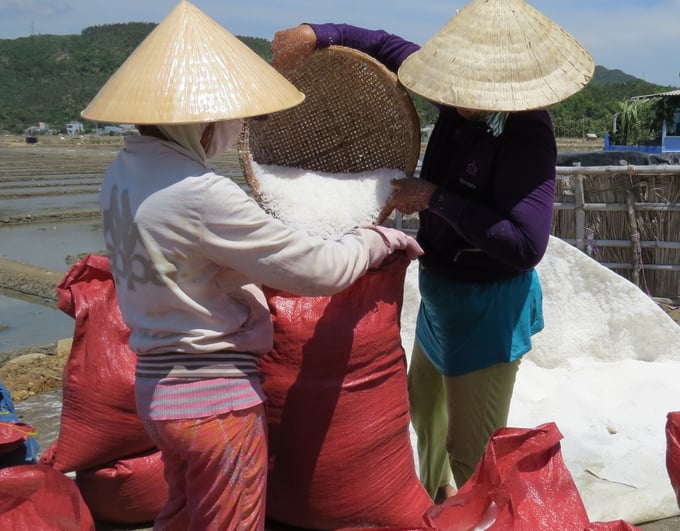
Perhaps among many jobs related to the sea, salt making remains the most difficult. Photo: Vo Thanh Ky.
The liberation of their homeland made many people extremely happy. They openly carried salt to sell or barter day and night. The happiest thing was that they got to hitch a ride on the soldiers' vehicles on the bumpy, rocky roads. "Back then, there were very few vehicles, not as many as now, mainly the soldiers' tricycles (trucks with a box in the back). Whenever we saw a vehicle, we waved and asked for a ride,” said Van.
The sea was calm, a few people loaded salt onto bamboo boats, covered them carefully, and took turns rowing along the coast. The nearest destination was the Do Moc ferry (bordering Pho Quang and Pho Van, Duc Pho town). From the sea, the boats turned into My A estuary and then went up the Thoa River, heading upstream. Many times, they rowed along the coast quite far and then pulled up to the fine sandbank. Together, they pulled the boats to hide in the casuarina trees before carrying the salt into the village.
"When selling in coastal villages, we usually go by boat, but in places far from the sea, we carry the salt on foot," said Ga. "Now we hire a truck to take us there and then borrow a bicycle to push the salt around to sell. Although it's less difficult than before, hardship remains,” Nhung added.
Translated by Samuel Pham
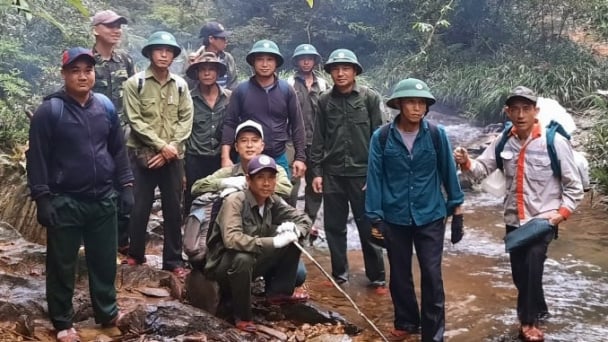
(VAN) All parties have acknowledged the barriers in mobilizing finance for conservation, proposing detailed initiatives. One of the most effective methods is to employ natural-based solutions.

(VAN) Vietnam is the country with the highest diversity of primate species in Southeast Asia, but most of them are seriously threatened, creating an urgent need for conservation efforts.
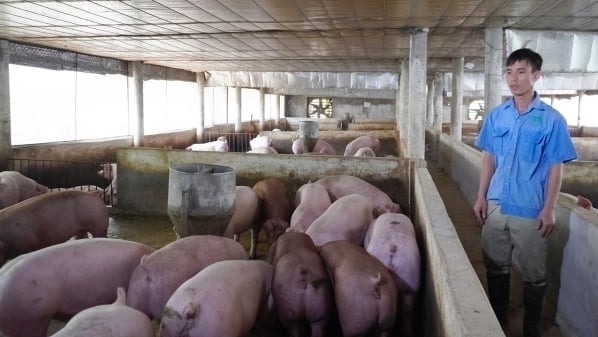
(VAN) Livestock farmers are still hesitant to use the new ASF vaccine products, mostly waiting for responses from large businesses before making a decision.
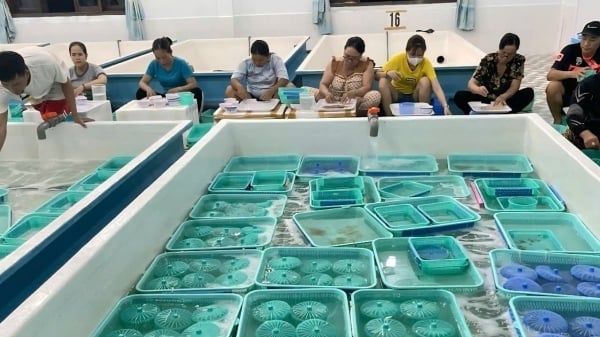
(VAN) Khanh Hoa and Phu Yen continue to strengthen inspection and control of lobster seed circulation in the area, and strictly handle violations.
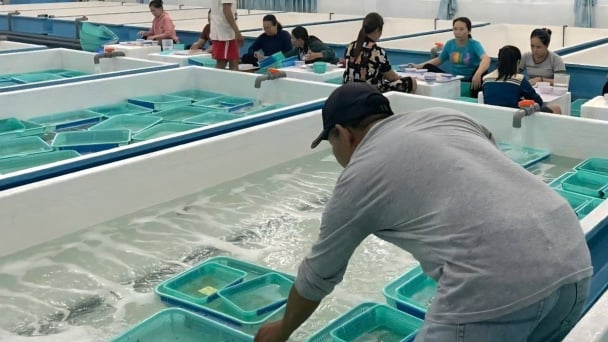
(VAN) Phu Yen and Khanh Hoa recently discovered many batches of lobster seeds of unknown origin. The authorities quickly moved and handled it as per regulations.
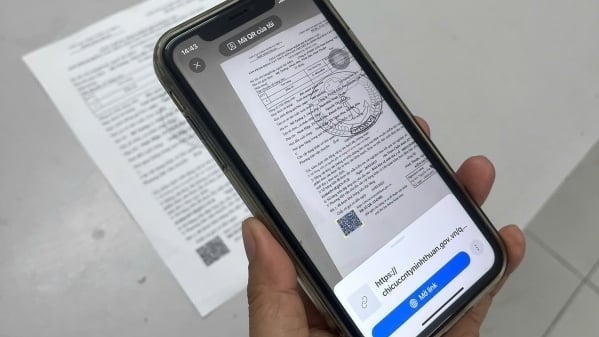
(VAN) Thanks to Ninh Thuans’s digitization of shrimp seed quarantine declarations, the procedures for payment and result reception are simpler and quicker.

(VAN) In Amsterdam, the Netherlands, the 18th Global Dairy Congress 2025 took place from June 18-19, where Vinamilk won many grand awards.